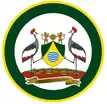Dagoretti
Dagoretti is an area in the western part of Nairobi, the capital of Kenya. Administratively it is one of eight divisions of Nairobi. The Dagoretti division is divided into six Locations. The electoral Dagoretti South Constituency has the same boundaries as Dagoretti division.
Locations
| Location | Population* |
|---|---|
| Kawangware | 86,824 |
| Kenyatta/Golf course | 30,253 |
| Mutuini | 14,521 |
| Riruta Satellite | 65,958 |
| Uthiru/Ruthimitu | 23,016 |
| Waithaka | 19,937 |
| Total | 240,081 |
| 1999 census.[1] | |
Transport
The Main form of Transport is by road, small buses (matatus) and buses (Kenya Bus Service, Ciy Hoppa, City Shuttle and Connection Bus) offer short distance trips to the City Centre.
The Dagoretti railway station is on the main line of the national railway system.
Economic activities
The main form of income is in industrial labor, construction, household chores, small scale trading on groceries, and careers in carpentry, masonry and tailoring.also middle class population working in nearby schools, hospitals and other government institutions.
History
It is difficult to say when Dagoretti was first inhabited. But by the late 1890s when Europeans first visited the area, they found a populated and cultivated territory.
19th century Dagoretti was part of the rich food-producing Kikuyu country[2] and was populated with Masai and Kikuyu people as it lay on the edge of Masai Country. Kikuyu farmed sugar cane and banana among other crops[3] while Maasai kept cattle. The two groups cohabited and their lives together ebbed between trade and raid. In fact some Kikuyus spoke Maasai, some Maasai spoke Gikuyu. The prominent Kikuyu leader Waiyaki wa Hinga is believed to have Maasai heritage.
In August 1890 Fredrick Lugard departed Mombasa for Lake Victoria on behalf of the Imperial British East Africa Company.[4] Part of his mission was to establish treaties with local tribes and build forts along the route to Lake Victoria. Lugard arrived at Dagoertti by October 1890[2] having walked over 350 miles from Mombasa with his entourage of Sudanese askaris led by Shukri Aga; Somali scouts led by Dualla Idris and nearly 300 Swahili porters.[5]
Idris had already visited Dagoretti a few years earlier while serving on Count Sámuel Teleki's 1886 -1889 expedition to Lake Turkana.[6]
At Dagoretti Lugard was introduced to local leader and land owner Waiyaki wa Hinga with whom he formed an alliance by participating in a traditional blood brotherhood ceremony. Waiyaki helped Lugard identify a piece of land on which to built a fort. The fort at Dagoretti was the seventh IBEAC fort and the first north of Machakos.[7]
See also
References
- information.go.ke: CDF allocation by sector and location (2003-6)
- Stephanie), Nicholls, C. S. (Christine (2005). Red strangers : the white tribe of Kenya. Timewell Press. p. 10. ISBN 1857252063. OCLC 936730229.
- N., Wamagatta, Evanson (2009). The Presbyterian Church of East Africa : an account of its Gospel Missionary Society origins, 1895-1946. New York: Peter Lang. p. 7. ISBN 978-1433105968. OCLC 774287260.
- "Frederick Lugard | British colonial administrator". Encyclopedia Britannica. Retrieved 2017-05-29.
- Charles., Miller (2015). The Lunatic Express. Head of Zeus. p. 4048. ISBN 9781784972714. OCLC 968732897.
- "Short bio of the great Ducaale Idriis 1864-1896 - SomaliNet Forums". www.somalinet.com. Retrieved 2017-05-29.
- 1858-1945., Lugard, F. D. (Frederick Dealtry), Sir (2006). The rise of our East African Empire : early efforts in Nyasaland and Uganda. Routledge. p. 334. ISBN 1134570031. OCLC 861484413.CS1 maint: numeric names: authors list (link)

